War Veterans In Iran Protest Hardship Amid Very High Inflation
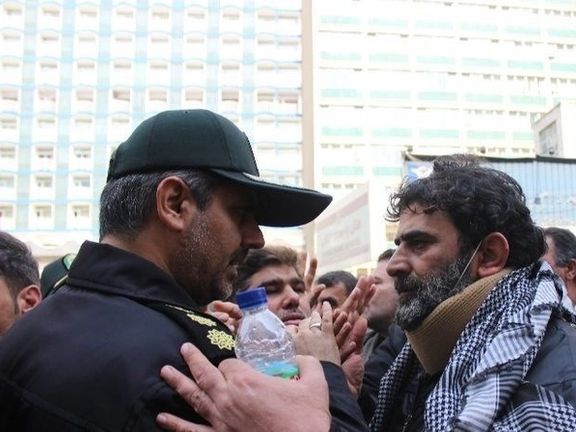
A group of Iranian war veterans have once again staged a rally in Tehran to protest hardship amid a minimum 70-percent food price inflation and their inadequate pensions.

A group of Iranian war veterans have once again staged a rally in Tehran to protest hardship amid a minimum 70-percent food price inflation and their inadequate pensions.
According to a video received by Iran International, one of the people who suffered injuries during Iran-Iraq war said Monday that government officials keep repeating that “you went to war for the sake of God.”
This is not the first time the war veterans protest against their poor living conditions.
In the past years, they gathered many times in front of the parliament urging lawmakers to resolve their issues.
In August, Iran's Council of Retirees reported that one of the veterans wounded in the Iran-Iraq war, named Khosro Yavari, set himself on fire and died in Songhor city of Kermanshah province due to financial hardship.
Meanwhile, Iran’s Parliament Speaker Mohammad Bagher Ghalibaf admitted in a televised speech Monday that the Islamic Republic has failed to resolve economic problems and control inflation. He said the regime has not been able to help people in covering their daily life expenses.
He once again claimed the government intends to compensate for this to some extent "with policies such as tax exemptions and direct subsidies".
These remarks come at a time when inflation has increased sharply this year and MPs have warned against another wave of inflation in the coming year beginning March 21.
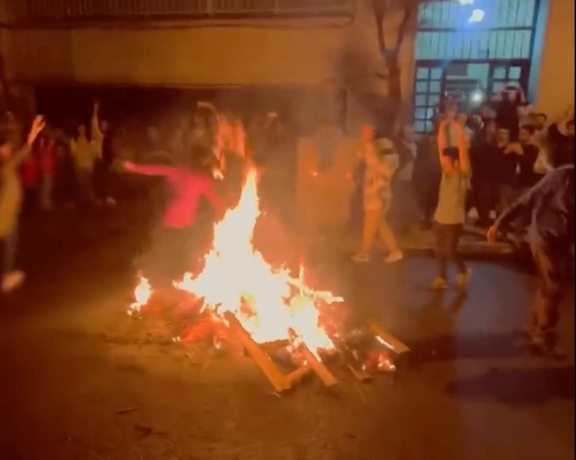
Thousands of young Iranians took to the streets in several cities Tuesday evening chanting slogans against the regime and Supreme Leader Ali Khamenei.
They came out to mark the ancient Iranian annual fire festival and used the occasion to vent their anger at security forces.
The action came after a call for three nights of protests beginning Monday, when smaller groups of protesters were seen marching and chanting anti-government slogans in some parts of the capital Tehran, Mashhad, Qazvin, and Malayer. But the turnout appeared to be much more impressive Tuesday evening with more cities and neighborhoods in Tehran, Rasht, Kamyaran, Divandareh, Sanandaj, Karaj, Ghaemshahr, Esfahan, Mashhad and Zahedan involved.
Videos posted on social media show crowds chanting “Death to Khamenei”, “Death to the Dictator” and other anti-government slogans, throwing firecrackers and small homemade bombs (grenades) at security forces. They were also playing “Baraye” – a song that has turned into the anthem of the Mahsa protest movement – full power on speakers, and dancing around massive bonfires.
The fire festival, now called Charshanbeh Soori (Suri), has been celebrated for many centuries by Iranians, on the last Tuesday of the year in the Iranian calendar. It is the first of the festivities of the New Year (Nowruz) which falls on March 21.
Religious fundamentalists frown upon the fire festival as a ‘pagan tradition’ and authorities have often resorted to harsh measures to suppress its celebration in the streets, often bringing out the police, Basij militia, and vigilante groups to disperse the youth and even arrest them. Thus, the streets in larger cities such as Tehran have often turned into battlegrounds between the dancing and merrymaking youth and the police on the last Tuesday of the year.
“Charshanbeh Soori is the only time that people are also ‘armed’,” Jahan, a young man in Karaj, a city of 1.2 million half an hour from the capital Tehran, told Iran International referring to the homemade firecrackers the youth have been using for years to taunt the security forces during the fire festival.
Younger people want to take revenge on the regime and its security forces for suppression of the protests in the past few months, Jahan said, adding that the call to the three-night protests is like cracking the whip so that the regime understands that people have not retreated in the face of its cruelty to protesters.
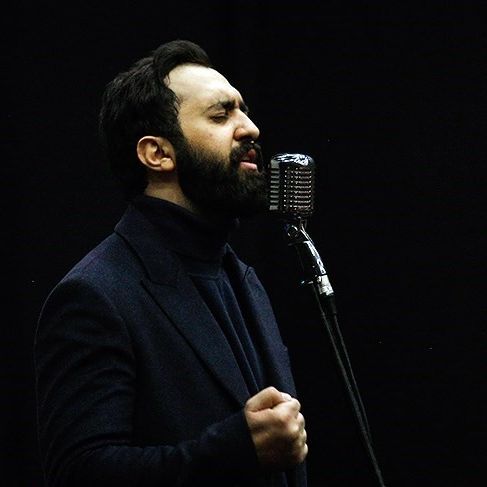
The Iranian government has imposed a property ban on 53 individuals, including artists for expressing support for the antigovernment protest movement, a document published this week shows.
Mehdi Yarahi, a singer who supported the nationwide protests, in a post on his Instagram Monday published a picture of an order which belongs to Deeds and Properties Registration Organization of Iran showing that he is banned from buying and selling property.
Yarahi also announced that he along with famous actress Taraneh Alidousti, film director Asghar Farhadi and prominent musician Kayhan Kalhor were banned from transactions that need to be registered officially.
Within the past six months and during uprising against the clerical rulers, the government mounted pressure on many artists by arrests, summons, and imprisonment to force them to stop expressing support for the movement.
A TV host, Mojtaba Pourbakhsh, who used to work for Iran’s state television, also wrote in a tweet that it’s been almost forty days that he is jobless struggling against cancer at home.
He was fired by the directors of the state TV for expressing solidarity with people and with football legend Ali Karimi who is one of the opposition leaders now.
This is not the first time that the Islamic Republic puts such bans on artists or other activists and even journalists.
In 2019, Iran’s judiciary banned the employees of Iran International from purchasing or selling assets in Iran due to the coverage of the protests in November of that year.
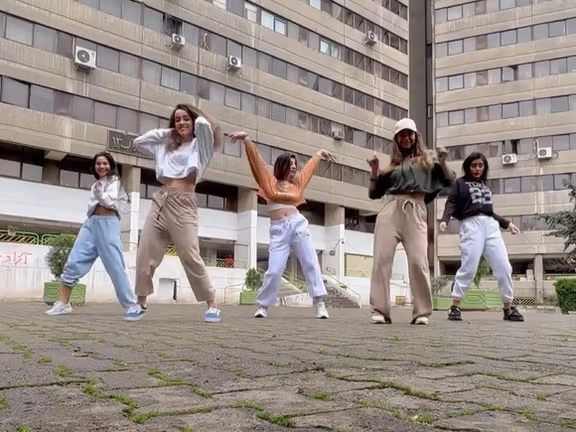
The Islamic Republic has always frowned upon dance but recently even a simple choreographed or ‘synchronized movement’ – as the regime calls it – has become an act of protest.
Last week on International Women’s Day, a 40-second video of five young women in loose clothing and without the mandatory headscarf dancing in Tehran’s Ekbatan neighborhood to the song “Calm Down” by Selena Gomez and Nigerian singer Rema went viral, prompting the regime’s security forces to start a hunt for the teen girls.
The video was published on Instagram by the trainer of the troupe, who was the first victim to be identified and forced to remove the video and deactivate her page. The following day, Shahrak Ekbatan Twitter account, which covers news about the neighborhood, warned that police were looking for the teenagers. The neighborhood has been an epicenter of ongoing protests ignited by the death of Mahsa Amini, the 22-year-old woman who died in September 2022 while in police custody following her arrest for not wearing her headscarf “properly.”
"They looked for CCTV footage of Block 13 [apartment building] to identify the girls who were only dancing and were not involved in any political activity. Police were seen checking the footage and questioning the guards," it said.
The account later reported that the five girls were initially summoned and received a warning, and later, called in again and detained for two days before being pressured into making a video of forced confessions and expressing remorse.

After news of the manhunt for the teenagers broke out, people from Iran and other countries started releasing videos of themselves dancing to the same tune to express solidarity and support for the Iranian girls.
Prominent Iranian human rights defender and currently a political prisoner, Narges Mohammadi, republished the video of the dance on social media on Tuesday, saying women's singing and dancing is a form of feminine presence in the streets. This is a right which should not be suppressed, she noted. Earlier in the week, actor-cum-activist Golshifteh Farahani also published the video of the dance, with the caption, "Nothing can stop the freedom of Iranian women. Nothing can stop the freedom of all human beings."
The simple act of dancing on streets is construed as “defiance” against the Islamic Republic, so are many other simple things in Iran since the regime tends to label anything it deems “critical” or “improper” as a security threat.
The five teenagers are not the only victims of the Islamic Republic’s opposition to dancing and singing. Islamic laws in Iran forbid dancing, although many people dance during family gatherings in their homes. Even using the word “dance” is forbidden in all media platforms and publications in all sorts in Iran. A state-TV host was banned in 2021 after a guest on her program mentioned the word “dancing.” Several Iranian university professors were sacked late in 2022 over participating in the graduation ceremony of their students because some people danced in the celebrations. And most recently, a court sentenced two bloggers to ten and a half years in prison each for dancing in the streets. They were charged with “encouraging corruption and public prostitution”.
The Academy of Persian Language and Literature, the regulatory body for the Persian language currently led by hardliner politician Gholam-Ali Haddad-Adel, has proposed the word “synchronized movements” as a replacement for “dance” in all the literature published in Iran. Ironically, the regime is also against any synchronized movement by the people as it views any form of popular unity as an existential threat.
However, people in Iran are in sync more than ever to defy the regime. Iranians inside and outside the country keep singing the Grammy Award-winning protest song “Baraye” in their rallies and events. Shervin Hajipour’s revolution song, which is composed of a collection of tweets by Iranians bemoaning the situation in their country and has become the unofficial anthem of the women-led uprising in Iran, opens with “For dancing in the streets.”
In the past six months, many parts of Iran witnessed the largest protests since the 1979 revolution. More than 520 people have been killed.

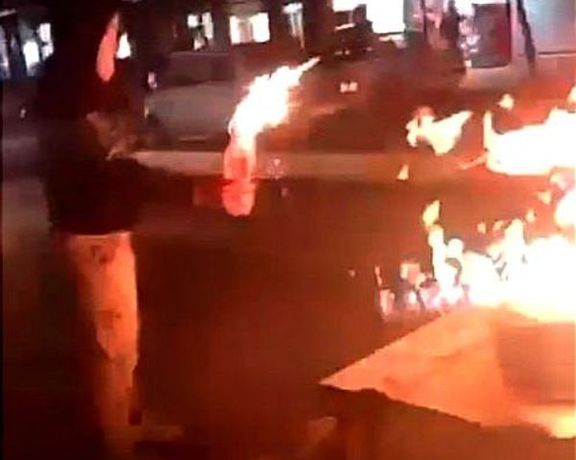
Exiled Prince Reza Pahlavi has called on Iranians to stage anti-regime rallies on the the ancient fire festival Tuesday to show that the protest movement is strong.
In a tweet on Monday, Reza Pahlavi said “the fire lit up in our hearts will never die”, asking people to take to streets to show anger at the clerical rulers once again.
Young activists' groups had called since late February for three nights of protests, including the Charshanbeh Suri fire festival on Tuesday, preceding the Iranian New Year next week.
“In the year that is coming to an end, hundreds of brave Iranians sacrificed their lives for the liberation of Iran. We are obliged to keep up on the path,” he added.
His statements come after young Iranians took to the streets in several cities Monday as the first night of protests. Young people use fire crackers and lit bonfires to mark the festival.
Abbas Ali Mohammadian, the police commander of Tehran has warned that "the police will use the capacity of mosques and public groups" to prevent the celebrations in the streets.
The fire festival is celebrated on the eve of the last Wednesday of the year, just before the New Year (Nowruz), which marks the day of the Spring Equinox. The festival dates to pre-Islamic times and for the same reason, its celebration is considered as a pagan practice by the clerics running the country since the Islamic Revolution in 1979.
Celebration of ancient festivals such as Nowruz and Charshanbeh Suri have persevered despite the many efforts of religious fundamentalists who tried to obliterate and replace them with Islamic feasts.
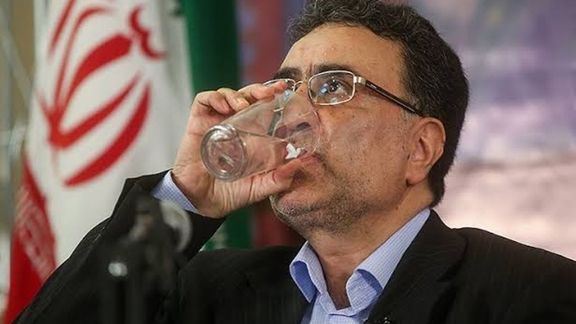
Jailed reformist activist Mostafa Tajzadeh says his cell was raided by prison guards because he is supporting a referendum to change the constitution in Iran.
In an open letter from prison addressed to Supreme Leader Ali Khamenei, Tajzadeh said that his cell, which he shares with two other political prisoners – Saeed Madani and Hossein Razzagh -- was attacked because all three expressed support for the proposal by opposition figure Mir-Hossein Mousavi for the referendum. Tajzadeh, a former deputy minister, protested that during “the unusual and long search” security forces confiscated some of his and Madani's personal notes.
Tajzadeh and his cellmates, as well as a few other political prisoners, including Faezeh Hashemi, the daughter of Iran former president Akbar Hashemi Rafsanjani, issued a statement in February, saying, "they will do their best to advance this proposal and a peaceful and non-violent transition to a completely democratic and developed Iranian structure." “The only way out of the impasse for the government is to surrender to the right of the people to determine their own destiny,” read the statement.
In his letter to Khamenei, Tajzadeh said, "You repeatedly claim that your opponents have the right to criticize you,” but "I have been sentenced to a total of 15 years in prison in two cases for criticizing your performance.” "Why are you so afraid of a referendum”, he asked Khamenei, underlining that confiscation of personal notes is a clear violation of laws and regulations of the country’s Prisons Organization.
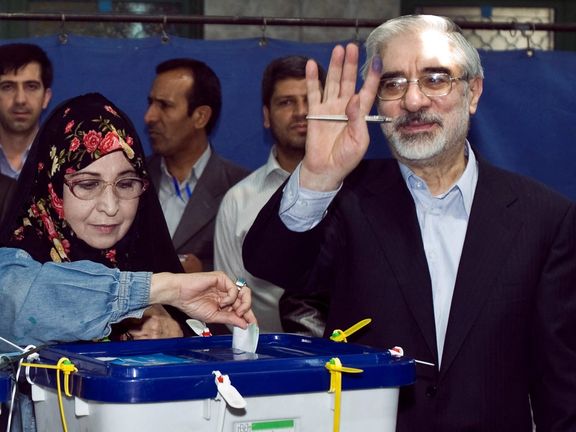
In a statement early in February, Mousavi, a presidential candidate in 2009 who became an opposition figure and was put under house arrest, said Iran needs “fundamental change” based on “Woman, Life, Freedom” and a referendum on the constitution. Since he published the statement, his house arrest has become stricter. Mousavi was put under house arrest in 2011 because he challenged the highly suspicious presidential re-election of Mahmoud Ahmadinejad in 2009.
Referring to government violence against protesters, Mousavi said the rulers of the Islamic Republic are not willing “to take the smallest step to meet the demands of the people.”
Mousavi implicitly repeated what exiled Prince Reza Pahlavi and other opposition figures have been demanding since last September, when the ‘Women, Life, Freedom movement’ started following the death in custody of 22-year-old Mahsa Amini – transition from the Islamic Republic. Pahlavi has acknowledged Mousavi’s call for a referendum
Iranians have been hotly debating the need to form an opposition council to manage the protest movement and plan for transition to a new form of government. After months of unorganized opposition to the regime concurrent with protests and strikes, prominent activists abroad united and established a framework of coordination. Inside the country no such move is possible because of repression. The group, which calls itself the Alliance for Democracy and Freedom in Iran, announced its existence in February.

Earlier in March, they issued a Charter of Solidarity and Alliance for Freedom, also called the Mahsa Charter.
Exiled Prince Reza Pahlavi, Nobel peace prize laureate Shirin Ebadi and Canada-based activist Hamed Esmaeilion, as well as US-based author, journalist and women’s rights activist Masih Alinejad, actress and activist Nazanin Boniadi and Secretary General of Komala Iranian Kurdish party Abdullah Mohtadi say the charter would lay the foundations for realizing the aspirations of protesters in Iran and gain international support for isolating the Islamic Republic.
The charter has been met with admiration and support as well as antipathy and criticism. Some people have denounced the charter saying it is not patriotic enough. However, the prominent opposition figures have called on people to put differences aside, saying that the charter is only a framework and a starting point for cooperation.